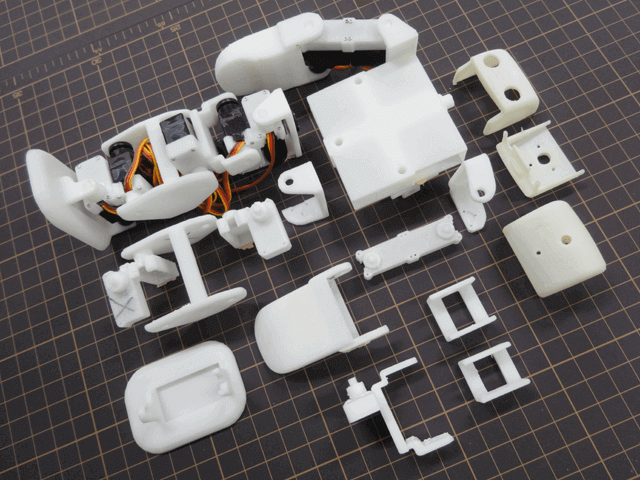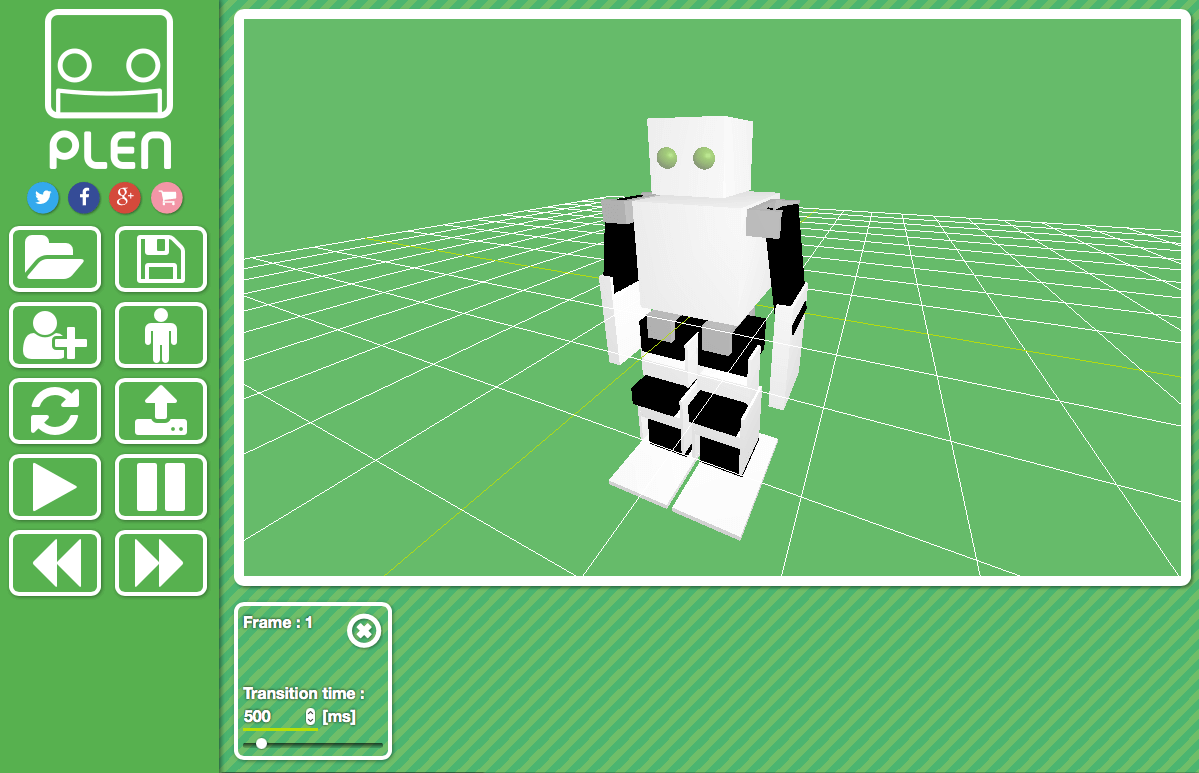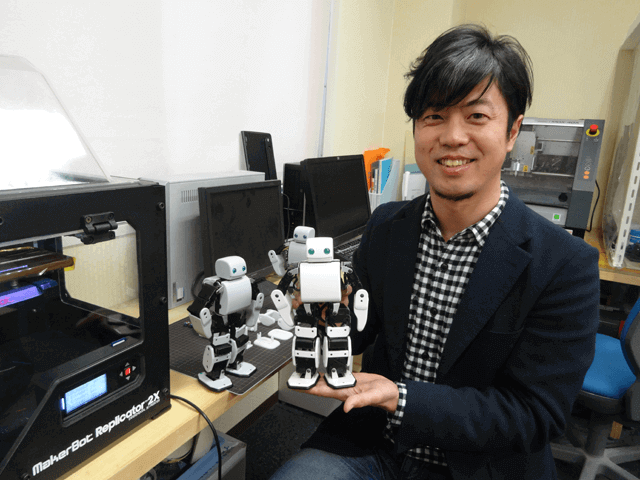We love robots. Especially the PLEN2. It’s a smartphone-controlled, Arduino-ready, open-source, easy to program and 3D printable robot. Looks cute, can do so many things. So we’re very happy to have a guest post provided by Cameron Norris from Wevolver.
This week at Wevolver, we launched the adorable PLEN2.
PLEN2 is a robot kit consisting control boards, servomotors and accessories that you assemble yourself. “You do not need any technical knowledge and special tools. What you need to build this robot is just a screwdriver”, Natsuo Akazawa, CEO and founder of PLEN Project Committee. When you complete it, PLEN2 is approximately 20 centimeters tall and weighs approximately 350 grams. With it’s 18 joints, it’s highly maneuverable.
This surprisingly advanced desktop-sized 3D printable robot aims to teach existing and aspiring makers about amateur robotics, 3D printing, and software programming – while at the same time having lots of fun.
Use 3D Printing to Customise The PLEN2

Designed in Osaka Japan by the PLEN Project Committee and initially launched on Kickstarter where it successfully raised $66,420. Thanks to it’s 18 degrees of freedom, the PLEN robot is capable of a variety of intricate movements, including roller skating, dancing, playing soccer and even driving its own ‘PLEN style’ miniature car.
Unlike other existing 3D printable robots, the editable design files are openly available to download in multiple formats (including Blender and Solidworks) creating the opportunity for user customization and community-driven development.
Easy To Assemble, Easy to Program

In 2006, the equally adorable original PLEN robot drew a lot of attention from YouTube audiences with its lifelike skating and skateboarding skills.
Jump forward nine years. The PLEN Project Committee have launched the PLEN Playground, a series of browser and app-based visual programming tools. They enable users to create complex motion functions to expand the PLEN’s abilities without the need to write code. Want to teach your PLEN karate while learning about structuring logics and programming? Go right ahead. The Scenography app available on both iOS and Android make it easy. You can also try your hand at the PLEN Motion Editor to create frame-by-frame motion animations that can be directly installed to your PLEN from your computer’s browser.
The PLEN Playground, coupled with the Arduino Micro (ATmega32U4) and open source software enables PLEN to interpret and respond to a wide range of sensory inputs, including motion control, facial expressions, myoelectrics and even brainwaves via EEG – making the PLEN2 an extremely adaptable tool for learning advanced robotics and human-robot interaction despite its tender appearance.
Small Robot, Huge Potential

A clear indicator of the serious potential of PLEN2 is the Developer Edition recently released through the PLEN web store. This version includes a high-performance Intel Edison Compute Module, 6-Axis Motion Sensor, and a RS485 communication port in the head board for those with the intention of carrying out some serious robotics research.
The Plen Project Committee are clearly committed to opening up the relationship between humans and technology through their open-source robot kit, but commenting on the increasingly tense relationship between Humans and labour replacing machines, company CEO Natsuo Akazawa (see right) stated that he does not believe robots should replace people, but they should instead complement our abilities – and what could be more complementary than a robot who fetches your morning coffee?
License: The text of "Adorable 3D Printable Robot: Meet the PLEN2" by All3DP is licensed under a Creative Commons Attribution 4.0 International License.